How to get questions at your next Q&A session is a query we receive all the time.
“Well, that’s the end of my presentation. Any questions from anyone? Anyone? Erm, any questions at all? No? No questions? Well, erm, in that case, thank you.”
We’ve all heard something like that before.

The situation is more awkward still when you are the one asking for questions and being met by the deafening silence!
So how do you get questions at your next Q&A session and prevent your invitation for questions failing?
First think about why the invitation has failed.
It fails, at least in part, because the presenter hasn’t properly prepared the audience.
If you want to get questions – prepare the audience!
The audience have been listening passively (or not) and all of a sudden you have demanded that they think and act upon their thoughts.
Without warning you have demanded that they “change gear” from passive into active – that takes time.
It is an ambush on the audience.
Audiences do not respond well to being ambushed.
They have to ask themselves if they have a question – this takes a few seconds.
Then they probably have a thought like this; “I did have a question, but I can’t remember what it was…” – this takes a few more seconds.
As the time ticks away, the prospect of getting a question is reduced continually.
While all of this is going on there is complete silence, and a slightly desperate looking speaker!
Here are the three steps you need to follow to ensure you get questions at your next Q&A.
STEP 1 – ADVANCE WARNING
Giving your audience advance warning is the first step.
Early in your presentation explain the rules of the game.
Tell them up front that there will be questions at the end.
Let them know how long you will be speaking for – and let them know how much time you have allocated for questions at the end.
“I’m going to be speaking for about 20 minutes, and at the end I have 10 minutes for questions.”
The audience now know they have 20 minutes before you will be inviting questions.
They have the idea of questions at the back of their mind from early on.
STEP 2 – THE PEN
You have given your audience time to prepare themselves to ask questions by following step 1.
There is another thing you can say to ensure you will get questions at the Q&A.
Tell people to make a note of their questions, pretty much at the same time as step 1.
Say clearly “Pick up a pen and write down your questions”
Hold up a pen as you do this.
That might seem unusual but every time I do it or see it being done, I notice some people in the audience pick up a pen at that same moment.
I’m not qualified to explain the psychology of why that works – but it does!
The audience are now primed to think and write.
STEP 3 – AND FINALLY…
The final step is to give people a reminder.
Shortly before the end of the presentation, remind everyone that questions will follow in just a few minutes time.
Reminding people at this point has a remarkable impact.
The mental process that the audience goes through, as we described earlier, happens before you need them to ask the question.
Giving your audience a few minutes to think about the question they want to ask leads to results.
By giving your audience this space to think before the Q&A you eliminate the terrible silence that often follows the invitation for questions.
Following these steps will help you to avoid awkward, and uncomfortable silence, and help your audience to be in the right space to ask questions.
SUMMARY
Don’t allow your presentation to have a flat finish because nobody wanted to ask a question. Do everything in your power to finish on a high.
- Give them a warning at the start of your remarks.
- Prime them early to think and write.
- Give them another warning near the end.
Follow these three steps and you dramatically reduce the prospect of getting zero questions.
Now you know how to get questions at a Q&A!
If you want a handy SketchNote to remind you of the tips in this article please click here.

